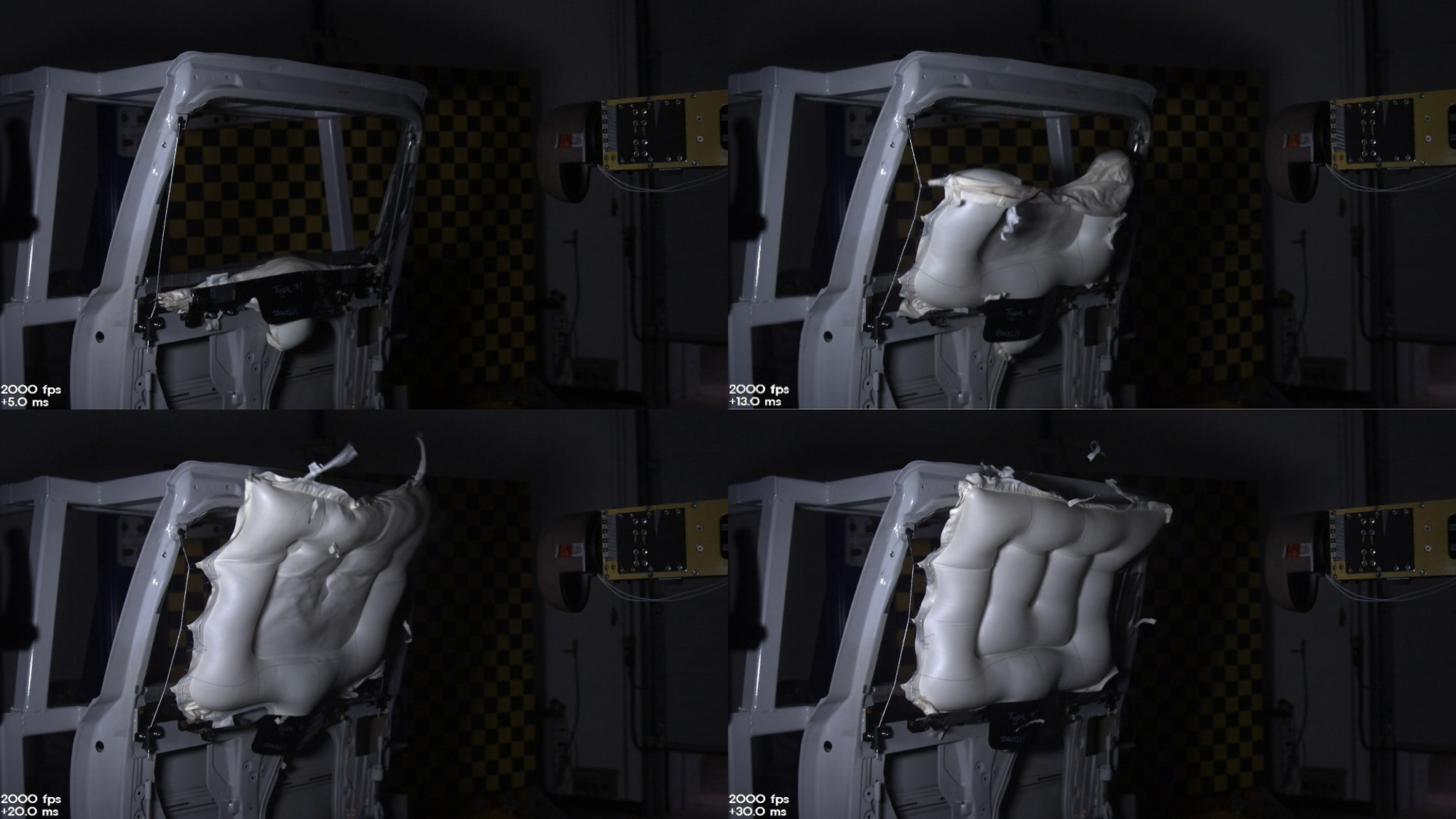
Hyundai Mobis is set to introduce the world’s first airbags specifically tailored for Purpose-Built Vehicles (PBVs), considering the unique safety requirements posed by the spacious interiors and diverse designs typical of PBVs. As PBV-based fleet services are expected to become commercially viable next year, the demand for passenger safety technologies in this sector is projected to grow.
On the 18th, Hyundai Mobis announced the development of the world’s first ‘Door Mounted Curtain Airbag’ that deploys upward from its place on the car door and the ‘Self-Supporting Passenger Airbag’ that absorbs impact solely through the support from the bottom of the airbag.
Both technologies aim to prevent passenger ejection or significantly reduce injuries during collisions or rollovers. They also meet various stringent safety standards in advanced overseas markets such as North America.
■ A New Kind of Curtain Airbag That Rises Vertically and Revolutionary Installation!
The Door Mounted Airbag breaks the traditional concept of curtain airbags that deploy downwards, instead rising vertically. It inflates in just 0.03 seconds during an accident.
Hyundai Mobis has applied a wire mechanism for curtain airbags for the first time globally. The cushion deploys along wires installed on either side of the airbag, preventing passengers from being ejected outside the window. This meets the ejection mitigation standards set by the National Highway Traffic Safety Administration (NHTSA) in the U.S., ensuring safety.
PBVs typically feature sliding doors for passenger entry and exit. There may not be enough space for airbag installation due to structural elements closing the door located on the ceiling. In these instances, the Door Mounted Airbag proves effective.
Lee Kyu-sang, Head of Passenger Safety Research at Hyundai Mobis, stated, “We have developed the innovative curtain airbag with the PBV market, specialized for urban transport, in mind. PBVs for robo-ride services emphasize openness, resulting in larger side windows, hence we project an increase in introduction of enhanced passenger safety devices in the future.”
■ A Self-Supporting Airbag That Absorbs Impact Without Structural Support (Windshield), Anticipating Future Expandability
The Self-Support Airbag is designed considering the spacious interior characteristics of PBVs, which may not rely on the windshield for structural support. It absorbs impact solely through the airbag’s lower support, thereby protecting passengers.
Currently, sedans and SUVs utilize about a 30-degree angled windshield to support the inflated cushion. However, due to the further distance to the windshield and nearly perpendicular angle in PBVs, the Self-Support Airbag overcomes these structural challenges.
Hyundai Mobis applies design technologies that press the cushion against the front section (crash pad) to secure the airbag. The cushion is instantly connected to the housing, which contains the airbag cover, preventing any lift-off of the cushion.
As a result, the airbag does not touch the windshield, and protection for passengers is accomplished solely through the support between the cushion and the front. Hyundai Mobis has also ensured high safety ratings that meet the North American New Car Assessment Program (NCAP) standards.
In addition, Hyundai Mobis is focused on the expandability of airbags for PBVs. They plan to develop and showcase various airbags tailored to customer-specific interior designs, accommodating free seating positions and passenger orientations.
Inasng j daedusj@autodiary.kr
